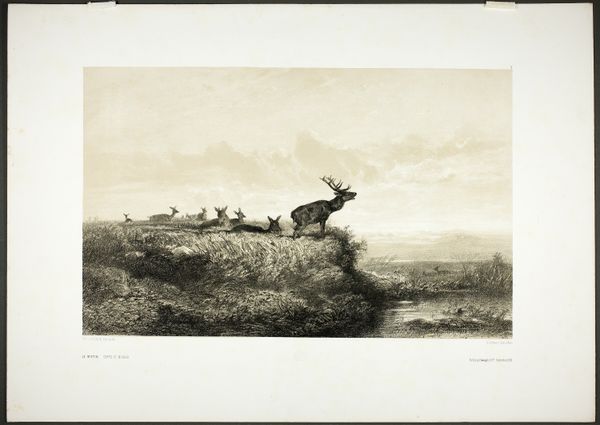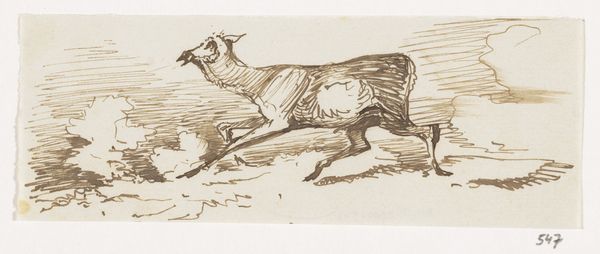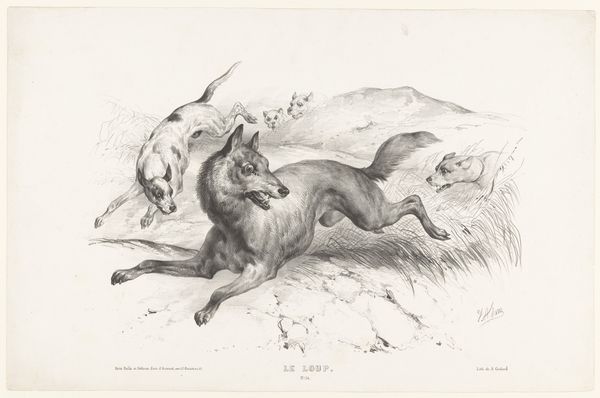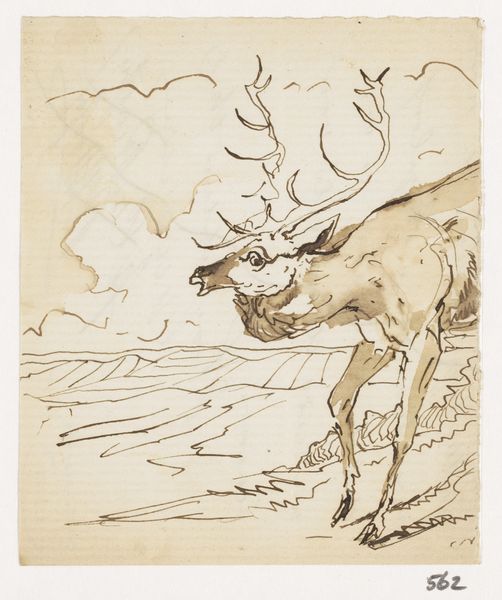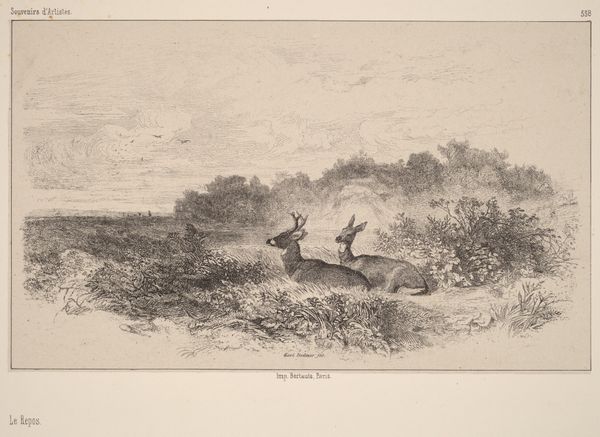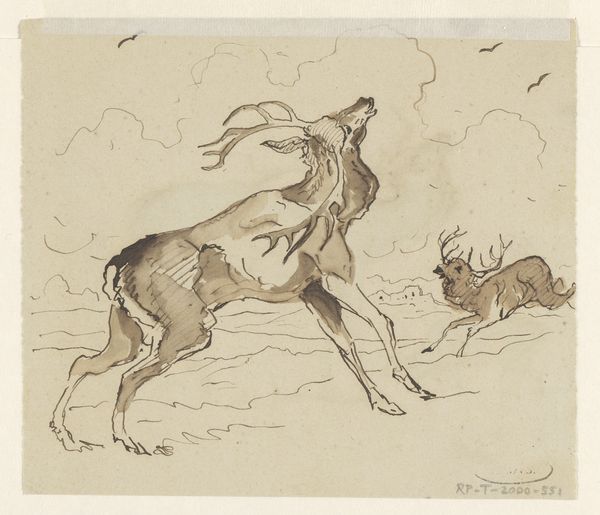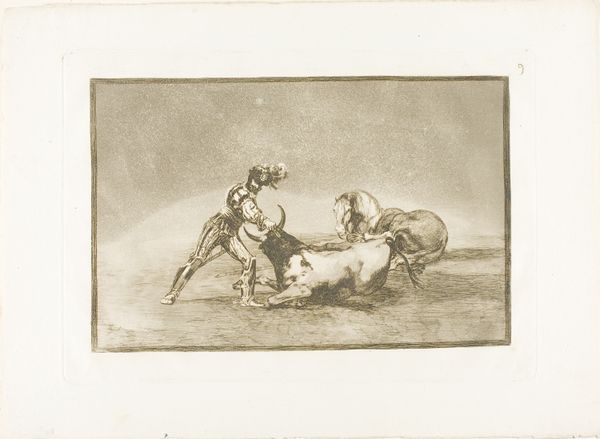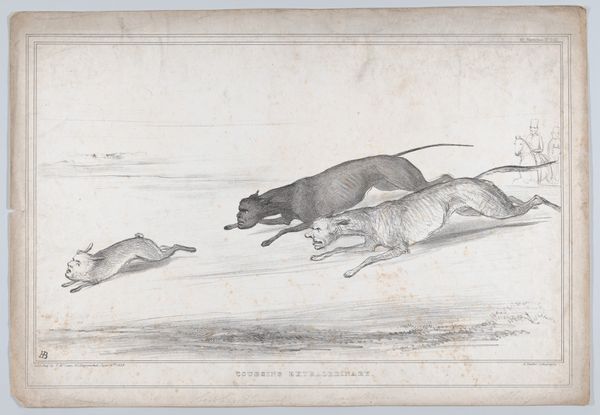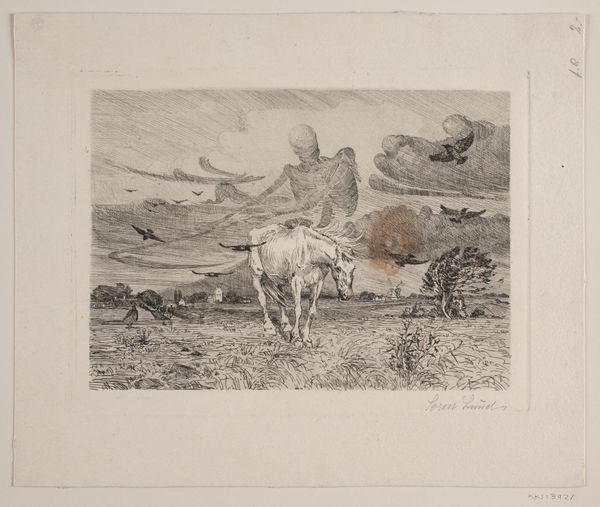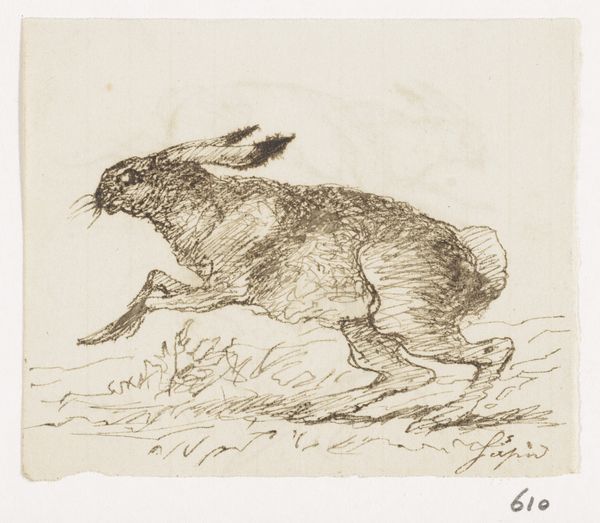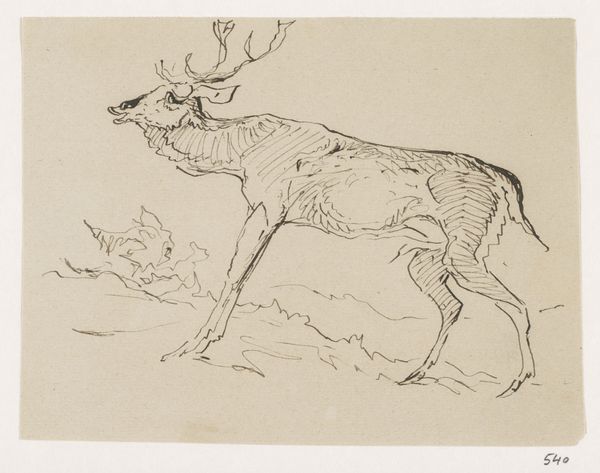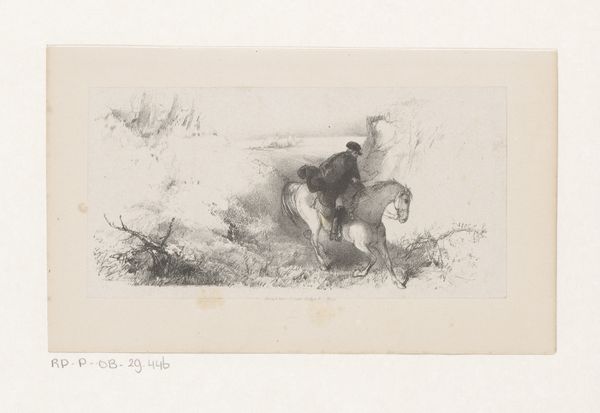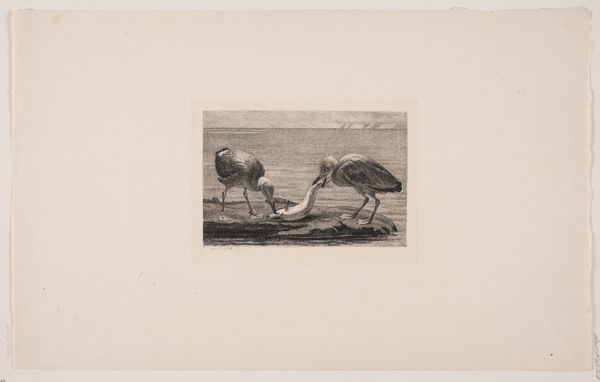
Flugten, pag. 11, illustration til Christian Winthers "Hjortens Flugt" 1856
0:00
0:00
Dimensions: 360 mm (height) x 554 mm (width) (bladmaal)
Editor: We're looking at Lorenz Frølich's "Flugten, pag. 11, illustration til Christian Winthers "Hjortens Flugt," created in 1856. It’s a lithograph, depicting a man clinging to a flying deer. I’m struck by how ethereal it feels, like a dream. What do you see in this piece, considering its historical context? Curator: The immediate appeal of this lithograph is certainly its fantastical imagery, drawing on Romantic ideals. However, considering its historical place in 19th-century Denmark, we must consider it within the burgeoning national identity movement. The artwork serves as an illustration for Christian Winther’s poem "Hjortens Flugt," tying it directly to national folklore. The deer, an animal closely tied to Danish nature, carries a man – but what kind of man do you think he is, and why is that important? Editor: Hmm, he appears to be of classical, possibly even mythological origin based on his attire. Would that play into this romanticized nationalism you're speaking of? Curator: Precisely! This blend of classical form and Danish folklore positions Denmark within a broader European cultural heritage, while simultaneously asserting its unique identity. The flying deer is not merely a flight from something but potentially *toward* a new national vision. Note how the technique of lithography makes the image accessible; How does accessibility impact the politicization of images? Editor: Well, I suppose broader distribution allows more people to connect with, and be potentially influenced by the artist’s ideas. So, the politics of imagery are intrinsically tied to viewership and societal participation. Curator: Exactly. Romanticism was about emotion, not logic. In this image Frølich helped construct an emotionally resonant landscape, literally, for a nation in transition, while also nodding to elite art ideals. This lithograph, in its technique and subject matter, acted as a public statement about Danish culture, even promoting such sentiment among common folk due to printmaking possibilities. Editor: That really gives me a different perspective. I was initially drawn to its dreamlike quality, but now I see it's more about crafting a national narrative through widely accessible imagery. Thank you. Curator: Indeed! Considering art’s function and access truly enriches how we respond to even the most ‘fantastical’ of art images.
Comments
No comments
Be the first to comment and join the conversation on the ultimate creative platform.
